RIALTO
the commercial center of Venice
“The Grand Canal was the main artery leading from the lagoon through the city to St. Mark’s. Boatyards and stone yards lined its banks until the 14th century when they began to interfere with the ever increasing flow of traffic between St. Mark’s and the Rialto markets. ”
The yellow circles represent St. Nicholas parish (left), St. Mark’s Square (right), and Rialto Bridge and markets (center).
Rialto, a contraction of rivo alto — high banks — was first settled in the ninth century and became the financial and commercial center of Venice. A pontoon bridge across the Grand Canal was built in 1181, linking Rialto to St. Mark’s. It was replaced in 1255 with a wooden drawbridge consisting of two inclined ramps meeting in a central platform that could be raised to let masted ships pass. Ships from everywhere were unloaded at the markets and warehouses of Rialto. Rialto was the leading international marketplace in Europe, the hub of the Silk Road and Mediterranean trade routes, where both comestibles (fruit, vegetables, fish, meat, cheese) and a treasure trove of merchandise from the east including spices, precious metals, gemstones, perfumes, and luxury fabrics. Slaves were sold until 1366 when slave trading was banned from Rialto.
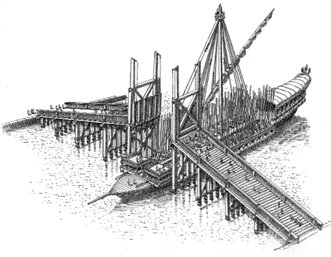
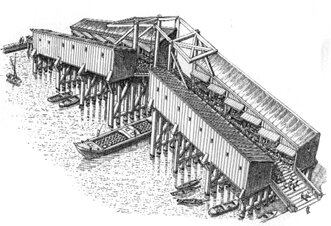

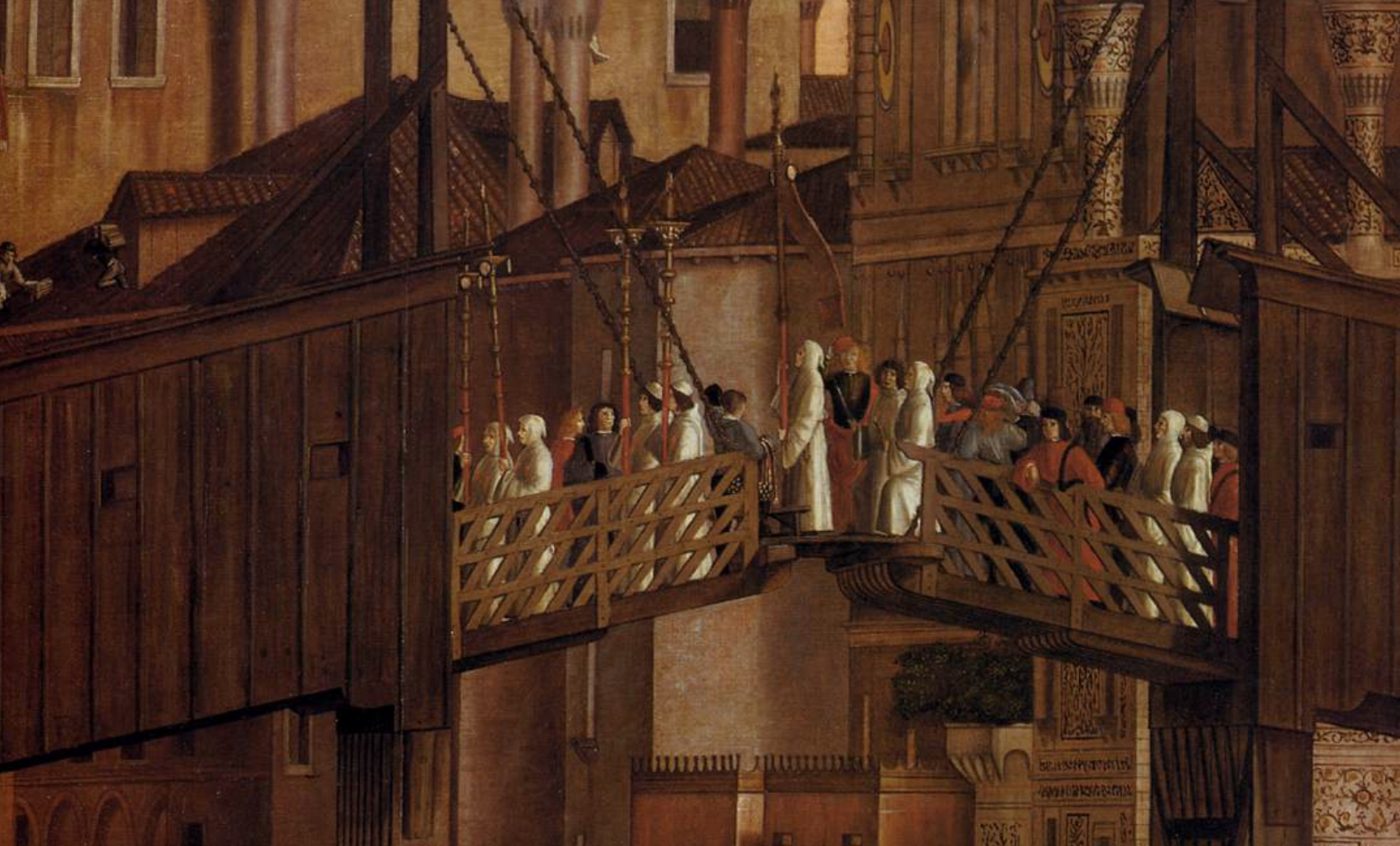
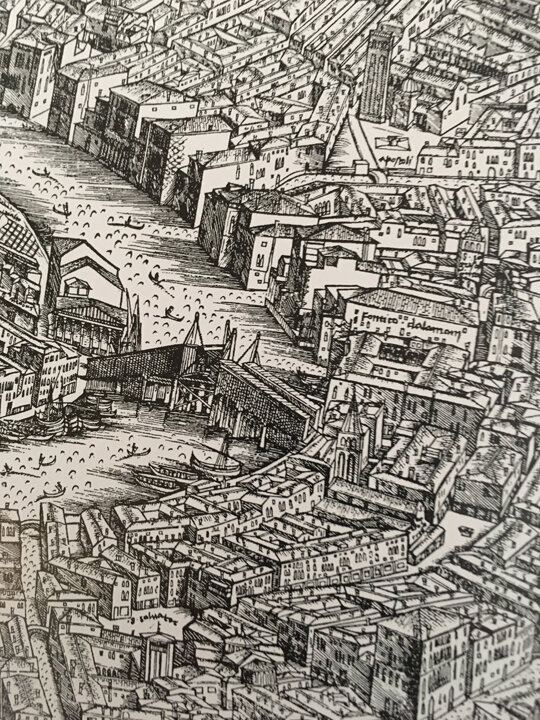
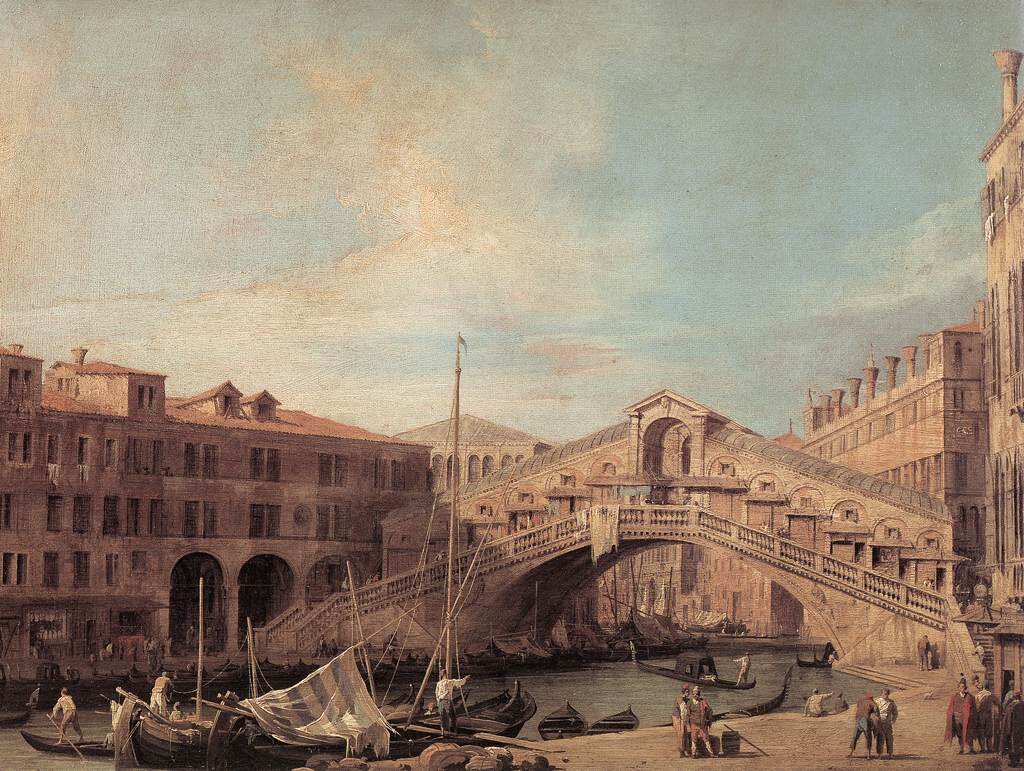
In 1310, during the insurrection of Bajamonte Tiepolo, the wooden bridge burned down and its replacement collapsed in 1444 under the weight of too many people. Some form of the wooden bridge remained until its final collapse in 1524, when the Venetian government decided to replace it with a stone bridge which still stands, the most iconic image of Venice in the world’s imagination.
Ponte di Rialto, the Rialto Bridge, was designed by Antonio da Ponte and completed in 1591.
A competition was held for the design of the new stone bridge. Architect Andrea Palladio submitted designs for an entire Roman market spanning the Grand Canal. He lost to Antonio Da Ponte.
In 1514, fire
destroyed almost the entire Rialto area. Among the few buildings left standing was San Giacomo di Rialto (right), the church whose square was the de facto main square of the Rialto district.


